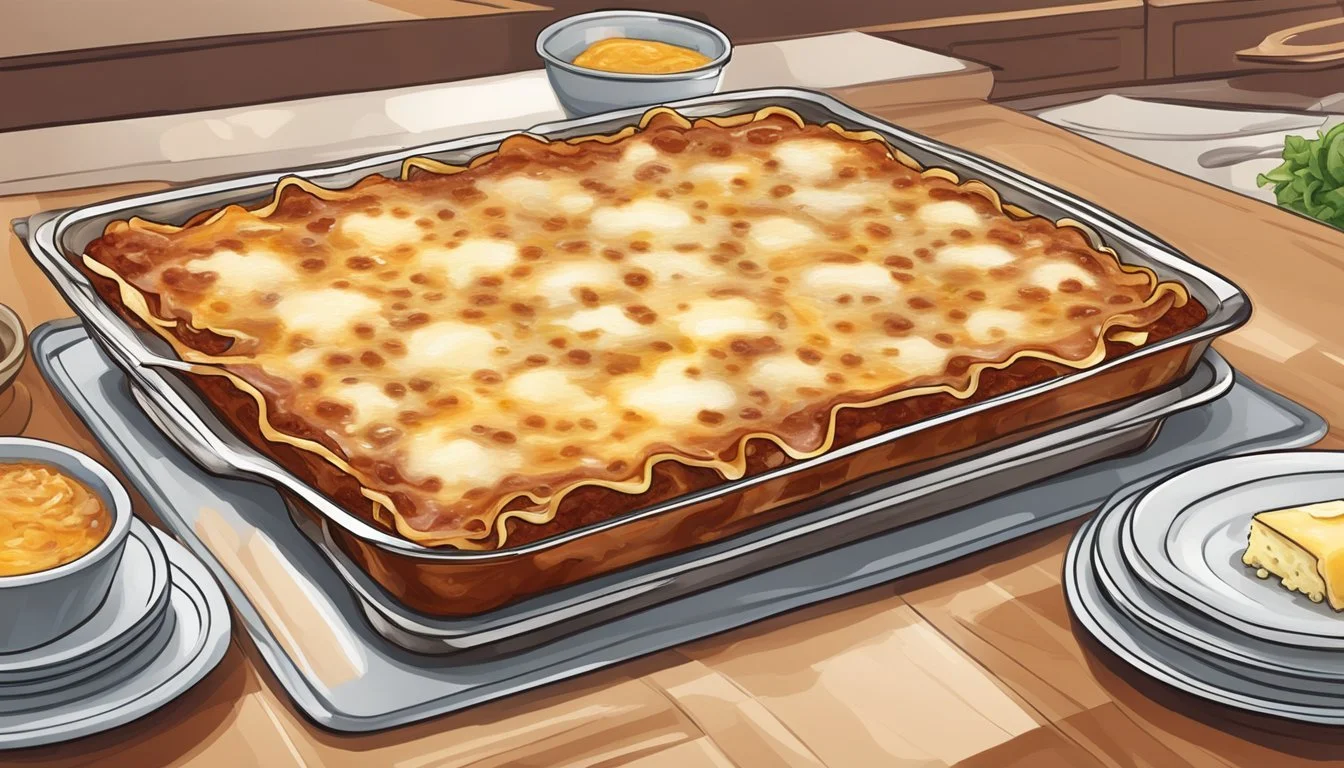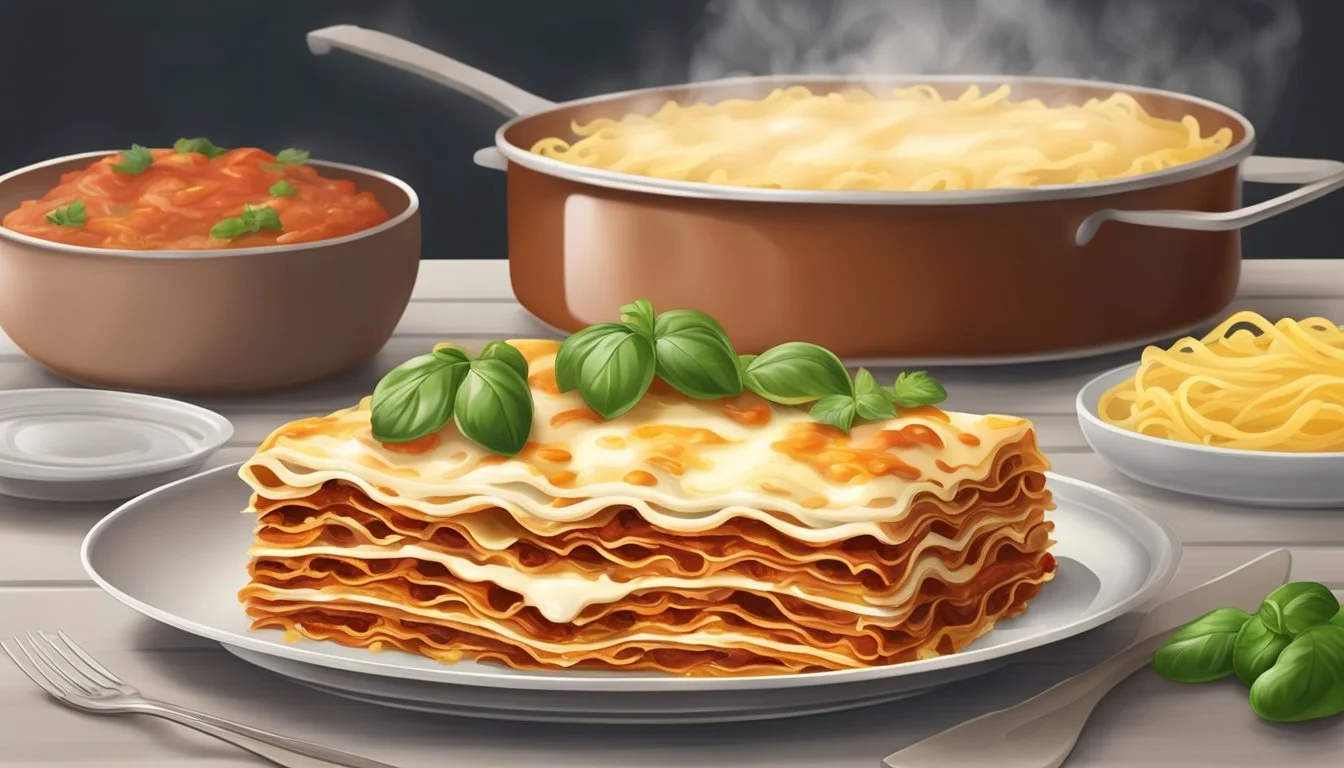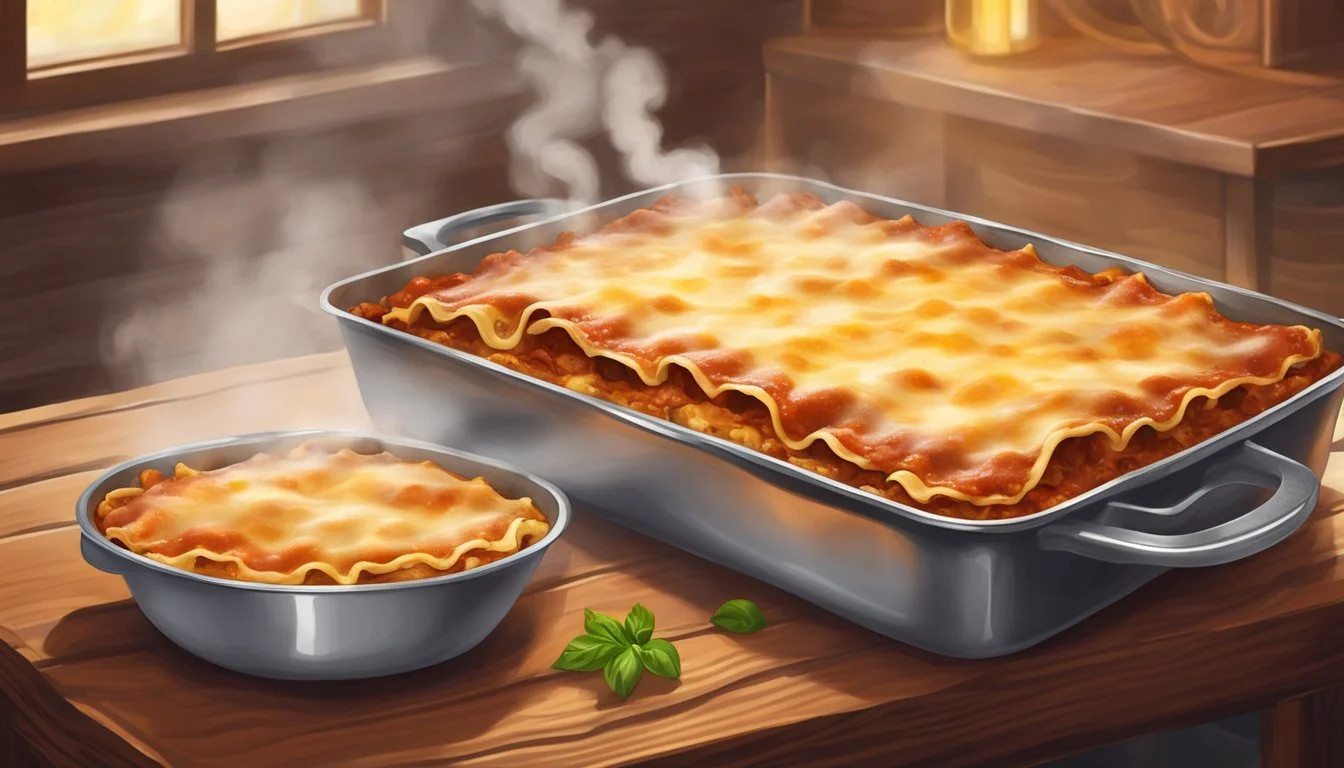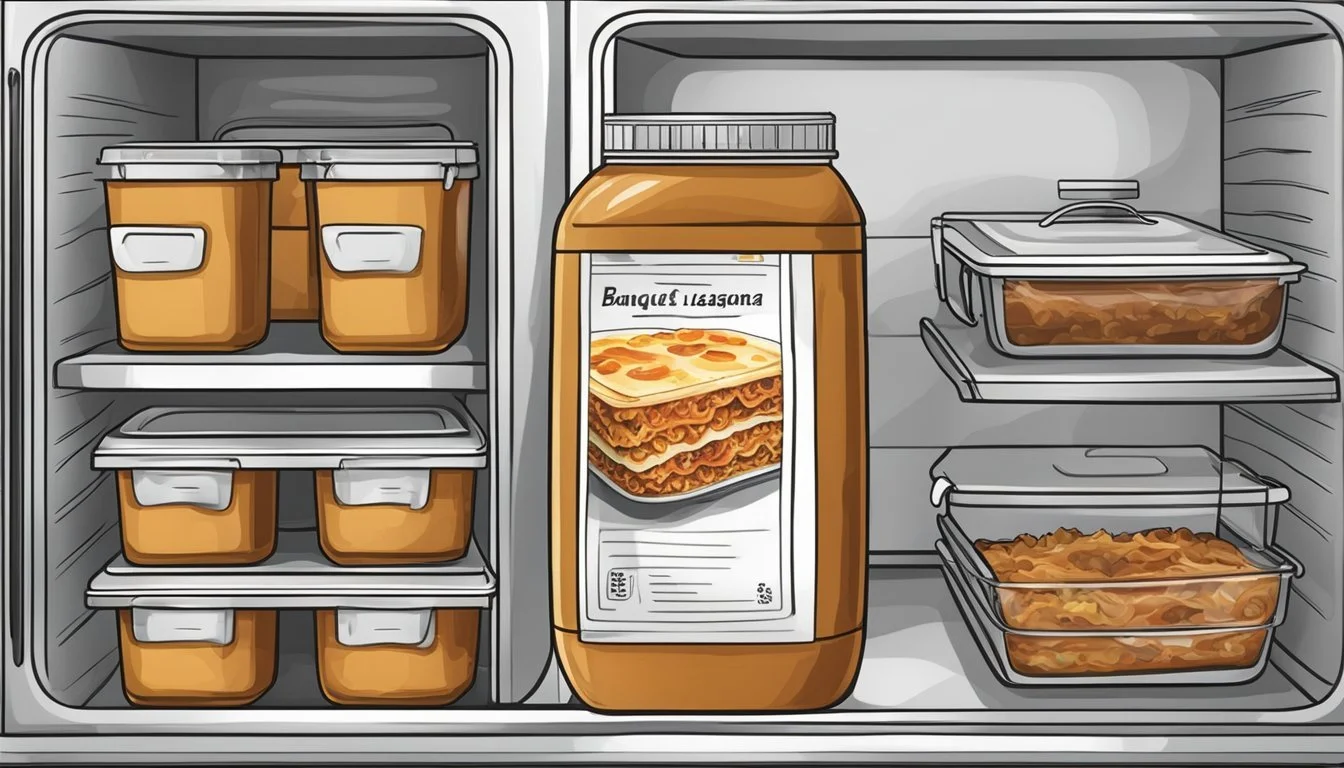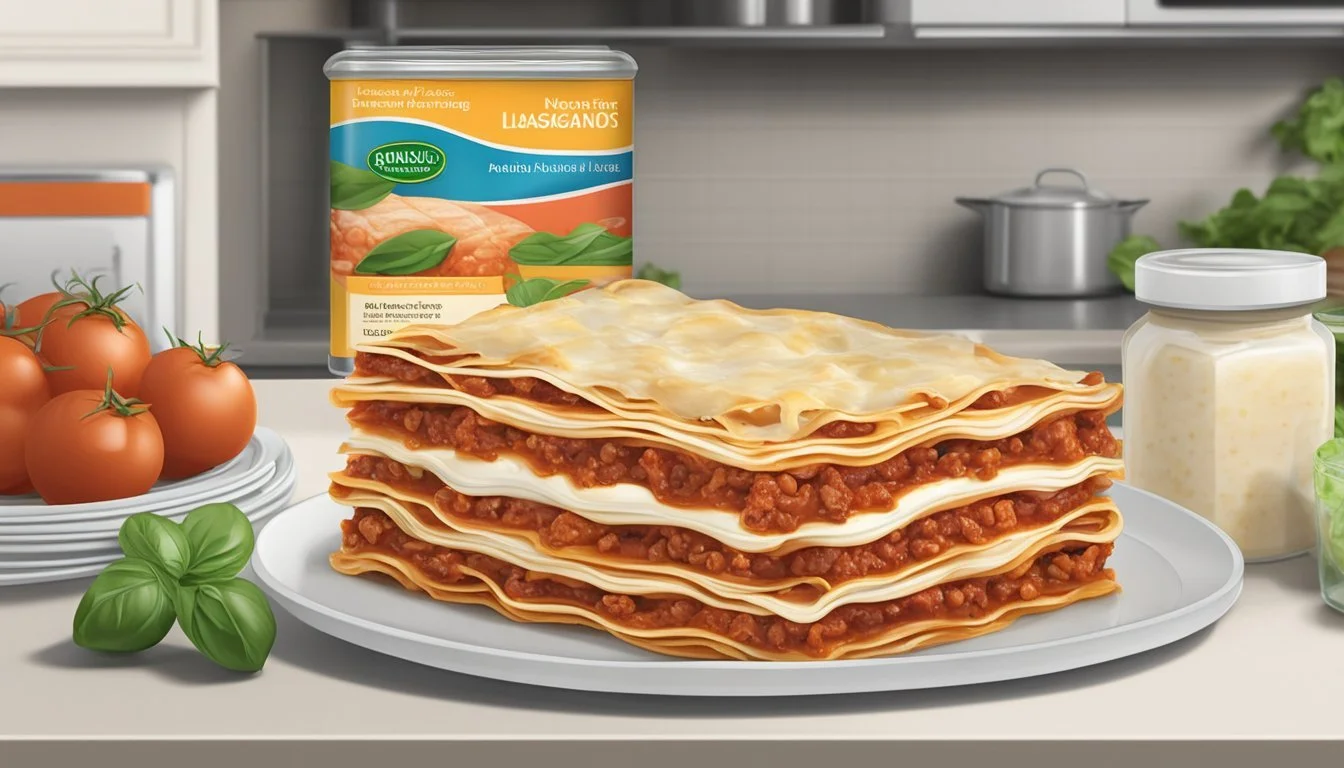How Long Does Banquet Lasagna with Meat Sauce Last?
Storage and Shelf Life Explained
Knowing how long Banquet Lasagna with Meat Sauce lasts can save both time and effort. When stored properly in the refrigerator, cooked lasagna can last up to five days. This meal combines convenience with a taste that many appreciate, making it a staple in many households.
The key to maximizing the shelf life of Banquet Lasagna with Meat Sauce lies in proper storage. Allow the lasagna to cool down at room temperature for about 30 minutes before refrigerating. This ensures the freshness and safety of the meal.
Considering its popularity and convenience, it's essential to store this dish correctly to enjoy it at its best. Proper handling ensures the flavors and textures remain intact, ready to be enjoyed at any time within the safe storage window.
Understanding Lasagna Components
Lasagna is a layered Italian dish that combines various ingredients like meat, cheese, and sauce for a rich, flavorful meal. Each component plays a critical role in creating the perfect balance of textures and tastes.
Lasagna Ingredients
Traditional lasagna includes lasagna noodles, meat sauce, tomato sauce, and cheese. Lasagna noodles are usually boiled until al dente. The meat sauce often uses ground beef or sausage, cooked with spices like Italian seasoning, basil, and parsley. A typical meat sauce includes onion, garlic, and tomato sauce.
Olive oil is often used to sauté the vegetables. Vegetables like carrots and celery may also be added for flavor. The combination of these ingredients provides a hearty base for the lasagna.
Role of Cheese in Lasagna
Cheese plays a pivotal role by adding creaminess and enhancing flavor. Mozzarella is usually used for its melting properties. Parmesan cheese adds a sharp, nutty flavor. Ricotta or cottage cheese is often included to create a creamy layer. Some recipes blend these cheeses for a balanced texture.
Using high-quality cheese can significantly improve the dish. It's also common to sprinkle parsley or basil over the cheese layers to add freshness.
Importance of Layering
Both the ingredients and the order in which they are assembled impact the final taste and texture of lasagna. Traditionally, the assembly begins with a layer of meat sauce spread across the pan. Lasagna noodles are layered in between, followed by layers of cheese filling, alternating with more layers of noodles and sauce.
Consistent layering ensures even cooking and flavor distribution. Proper layering also helps the lasagna maintain its shape when served. Each layer should be even to allow for proper baking and to prevent the lasagna from becoming too watery or dry.
By carefully selecting ingredients and paying attention to the cheese and layers, the resulting lasagna can be a delightful dish that balances both flavor and texture.
Preparation Techniques
Proper preparation techniques ensure that Banquet Lasagna with Meat Sauce is both delicious and safe to eat. This includes carefully assembling the ingredients, baking them at the right temperature, and allowing the dish to rest before serving.
Assembling Lasagna
Begin by preheating the oven to 375°F. Use a baking pan with raised edges to prevent spills and ensure even cooking. Start with a layer of meat sauce on the bottom of the pan.
Next, add a layer of lasagna noodles, followed by more meat sauce and a blend of mozzarella and Parmesan cheeses. Repeat these layers until all ingredients are used, topping with a generous layer of cheese.
Ensure that the lasagna is assembled evenly, with no dry spots, to maintain moisture during baking.
Baking Instructions
Place the assembled lasagna on a rimmed baking sheet to catch any overflow. Cover the pan with foil, crimping the edges to lock in moisture. Bake in the preheated oven for approximately an hour.
Midway through baking, remove the foil to allow the top layer of cheese to brown and become crispy. Check for doneness by inserting a knife into the center – it should come out hot and the cheese should be melted and bubbly.
Resting and Serving
After baking, let the lasagna rest for at least 15 minutes to allow the layers to settle and the juices to redistribute. This will make it easier to cut and serve neat portions.
Use a sharp knife to cut the lasagna into individual servings. A spatula can help lift each piece out cleanly.
Resting also enhances the flavor and texture, making the lasagna more enjoyable.
Storage Guidelines
Proper storage of Banquet Lasagna with Meat Sauce is essential to maintaining its quality and safety. This includes keeping the lasagna at the right temperatures, using appropriate containers, and recognizing signs of spoilage.
Refrigerating Lasagna
To refrigerate Banquet Lasagna with Meat Sauce, it must be cooled to room temperature before storage to prevent raising fridge temperatures, which can encourage bacterial growth.
Store the lasagna in airtight containers to prevent exposure to bacteria and moisture.
Typically, refrigerated lasagna should be consumed within 3-5 days. Ensure the refrigerator is set below 40°F (4°C) for optimal safety.
Freezing Lasagna
Freezing extends the lasagna's shelf life significantly. For best results, freeze lasagna either whole or in individual portions. Wrap it tightly in freezer wrap or store it in airtight containers to avoid freezer burn. The optimal temperature for freezing is 0°F (-18°C).
When properly stored, lasagna remains good for 6-8 months. Always label the freezer bag or container with the freeze date.
Identifying Spoilage
Knowing when lasagna has spoiled is crucial. Check for the following signs:
Off smell: A sour or strange odor is a clear indicator.
Texture changes: Sliminess or visible mold.
Discoloration: If the sauce or pasta looks grey or otherwise abnormal.
It's essential to discard any lasagna showing these signs to avoid foodborne illnesses. Bacterial growth is most likely when the lasagna stays at room temperature for more than 2 hours.
Reheating and Serving
When it comes to enjoying Banquet lasagna with meat sauce, reheating and serving it properly ensures that it retains its delicious flavor and texture. The best methods for reheating include using either the oven or the microwave to ensure even heating and melted cheese. Pairing it with complementary sides can elevate the dining experience.
Best Reheating Methods
Microwave: Place a slice of lasagna on a microwave-safe plate. Cover it with a microwave-safe lid or plastic wrap, leaving a small corner open for steam to escape. Microwave on medium power for 3-5 minutes. Check if it's heated through, and if not, continue in 1-minute increments.
Oven: Preheat the oven to 350°F (180°C). Place the lasagna in an oven-safe dish, loosely cover it with foil to prevent drying, and bake for 30-45 minutes. Tent the foil halfway if the top appears too browned. The lasagna should be heated through with melted cheese and golden edges.
Stovetop: For a skillet reheating method, place lasagna in a non-stick skillet on medium-low heat. Add a few tablespoons of water and cover with a lid. Let it heat for 20 minutes, shaking the skillet occasionally.
Serving Suggestions
Serve the reheated lasagna with a fresh green salad drizzled with a light vinaigrette to balance its rich, hearty flavors. A side of garlic bread not only complements the dish but also adds a satisfying crunch.
For garnish, consider sprinkling fresh basil or parsley over the lasagna. Top with extra Parmesan cheese if desired.
If there are any leftovers, store them properly in an airtight container in the fridge and consume them within 3-4 days for best quality.
Nutritional Information
Banquet Lasagna with Meat Sauce provides essential nutrients but also includes considerable amounts of fats, carbs, and proteins. Consumers should be aware of the caloric content and dietary considerations for a balanced diet.
Caloric Content
A single serving of Banquet Lasagna with Meat Sauce, which weighs 255 grams, contains approximately 270-300 calories.
This meal has a calorie breakdown of:
31% from fat,
52% from carbohydrates,
17-18% from protein.
These percentages and totals make it a moderately high-calorie meal, suitable for those needing a quick, energy-dense option. The variability in caloric values (ranging from 270 to 300) depends on the specific portion size and preparation method. Monitoring these counts is crucial for those managing their daily caloric intake.
Dietary Considerations
Banquet Lasagna is made with tender lasagna noodles layered with a zesty meat sauce and a blend of cheeses, including mozzarella and Parmesan.
For vegetarians, this meal is not suitable due to the inclusion of meat sauce. The presence of cheeses also implies a considerable amount of saturated fats and cholesterol.
Nutritionally, the lasagna offers:
10 grams of fat,
38 grams of carbohydrates,
13 grams of protein.
It lacks significant amounts of fiber and can have other added ingredients that may not align well with strict dietary plans. Those with lactose intolerance or dairy allergies should avoid it due to cheese content. Since it contains meat, those maintaining a vegetarian or vegan diet should seek alternative options.
Common Questions
Many have questions about the preparation and storage of Banquet Lasagna with Meat Sauce. Below, we address some common concerns regarding variations and tips for making, storing, and serving lasagna.
Lasagna Variations
Different types of lasagna offer diverse textures and flavors. No-boil lasagna noodles are a convenient option; they soften as the lasagna bakes and absorb the flavors of the sauce.
For those who prefer traditional methods, regular lasagna noodles need to be boiled first. Some also opt for gluten-free or vegetable-based noodles. The choice of noodles can affect the cooking time, texture, and final taste of the dish.
Adding ingredients like spinach, ricotta, or extra cheese layers can create various flavor profiles. Using a blend of meats such as beef, pork, or turkey can enhance the richness of the meat sauce.
Making Lasagna Ahead of Time
Preparing lasagna ahead of time can be a lifesaver for busy schedules. Assemble lasagna up to a day in advance, cover it tightly, and refrigerate. When ready to cook, it might require an extra 10-15 minutes in the oven.
Lasagna can also be frozen. After assembly, wrap the dish in aluminum foil and place it in the freezer. For best results, freeze for no more than three months. When ready to eat, thaw the lasagna in the refrigerator for 24 hours and then bake.
Refrigerated leftover lasagna can be safely stored for up to five days if kept in an airtight container. These methods ensure the lasagna retains its quality and flavor when cooked or reheated later.

